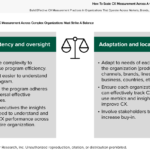Real estate investments can help you build wealth, passive income streams, and tax savings. But that doesn’t mean the average person is financially ready to be a landlord or flip houses.
Between a down payment, closing costs, initial repairs, and cash reserves, buying an investment property or investing in passive real estate syndications takes tens of thousands of dollars. And that says nothing of the risk of losses or unexpected expenses.
Before you even think about making offers or wiring funds to syndication deals, you need to put your own financial house in order.
Pre-Investing Steps
So, where do you begin? What kind of financial foundation do you need before you start investing in real estate?
Follow these pre-investing steps to position yourself to earn huge profits from real estate investment.
1. Stabilize your income & expenses
If you live hand to mouth because you don’t earn a stable income—or don’t know how to budget—you can’t possibly invest in assets that cost hundreds of thousands and come with their own unpredictable expenses.
In a poll last year, over a quarter of Americans (26%) responded that they “were unable to pay at least one bill last month.” Those Americans are nowhere near being ready to invest in real estate. Their first step must be to get their budget under control: to consistently earn enough to cover all living expenses each month.
Attack the problem from both sides. Take a red marker to every expense that you don’t absolutely need to survive. At the same time, look for ways to grow your income. That could mean a new full-time job, adding a side hustle, or getting the certifications, degrees, or experience needed for a career with more upward mobility.
2. Build an emergency fund
Stop me if this sounds familiar: “Well, sure, this month, my budget got thrown off, but that wasn’t my fault. I got hit with that unexpected ____” (fill in your favorite repair, health problem, work interruption, family crisis, etc.).
Unforeseen problems are the norm. Last month, it was a $2,000 car repair. This month, you came out of pocket for a $1,000 medical bill. Next month, it’ll be a reduction in work hours, or having to help out your hapless brother-in-law, or a meteorite landing in your living room.
Life throws you curveballs. Stop telling yourself a fairy tale that ideal budget conditions are normal conditions.
Start by saving up an emergency fund of $1,000 in the bank. Every spare penny needs to go into that savings account.
Eventually, you’ll want two to 12 months’ living expenses set aside in your emergency fund. The amount depends on how stable your income and expenses are. Someone with an extremely secure job and steady paycheck who spends the same amount each month can get away with a few months’ worth of expenses set aside. An entrepreneur with a wildly fluctuating income needs more.
But for now, just get to $1,000. Once you hit that milestone, you can start splitting your savings into several buckets.
3. Pay off unsecured debts
The average American has $5,805 in credit card debt. Woof.
Consider the easiest math question in the world: If you’re paying 24% interest on a credit card balance, should you pay off that balance or invest your money for a 10% return?
After reaching a $1,000 emergency fund, consider paying off all unsecured debt balances before continuing to grow your emergency fund. At the very least, put three-quarters of your savings toward paying down balances and the rest toward your emergency savings.
Lock your credit cards in a drawer somewhere until you’ve paid them off in full. You don’t need a moving target on your payoff balance.
4. Max out matching contributions
All right, you’ve knocked out your unsecured debts and started a basic emergency fund. Are you ready to start investing?
Yes—just not necessarily in real estate.
If your employer offers matching contributions, take them up on them. By doing this, you earn an instant 100% return on your investment, courtesy of your employer. Trust me: That’s higher than you can reliably earn on any investment in the real world. Plus, you get the tax benefits of investing in a 401(k) or other workplace retirement account.
And don’t get me started on all the zeal-eyed real estate evangelicals who don’t invest in stocks at all. You need stocks in your portfolio, so you might as well invest through a tax-advantaged account.
5. Set long-term goals
When I tell people at cocktail parties that I manage a real estate investment club and write about personal finance, their first question is often, “Oh great—what should I invest in?”
I then force a pleasant smile and respond, “Well, I really have no idea because I don’t know anything about your goals.”
A 24-year-old looking for maximum long-term growth should invest differently than a 54-year-old looking to stack reliable passive income streams. Someone with high anxiety and a low risk tolerance should invest differently than an investor with a strong stomach who accepts risk in exchange for higher average long-term returns.
Start by answering a few questions:
- In how many years do I want to reach financial independence?
- How much passive income do I need to reach financial independence?
- How much of that income do I want to come from real estate versus stocks?
- Knowing that I need stocks in my portfolio, do I need to delegate my stock investments to an investment advisor so I don’t panic-sell? Will a free or inexpensive robo-advisor serve the same purpose, or do I need a human being to talk me down the next time the stock market crashes?
6. Consider passive investing as you save funds
It often takes years to save up that first $50,000 to $100,000 needed to buy an investment property or invest in a real estate syndication. But that doesn’t mean you can’t start investing in real estate today.
Consider a few passive real estate investments to help you get started. The first that comes to mind for most investors is publicly traded real estate investment trusts (REITs), which you can buy for as little as $10 to $20. I personally don’t love them because they don’t actually provide much diversification from the stock market.
Instead, consider real estate crowdfunding platforms. They offer better diversification and low volatility, but most require a long-term investment. Minimum investments can range from $10 to $10,000.
Better yet, consider joining a real estate investment club that lets members combine funds to reach the minimum investment for real estate syndications. Our real estate investment club at SparkRental allows each member to invest $5,000 per property, for example. These group investments give you all the advantages of direct ownership—passive income, appreciation, and tax benefits—without the headaches of becoming a landlord or flipping houses.
7. Learn the fundamentals before investing
I started investing in real estate when I was 24. If only I’d known what I was doing, I’d be a multimillionaire today.
Instead, I charged ahead with all the hubris of youth, assuming I could just figure it all out on my own. I flipped houses without knowing how to manage contractors properly. I bought rental properties without learning how to forecast cash flow accurately. Like the foolish majority of landlords, I failed to learn all the nuances of my local landlord-tenant laws. I pulled permits without knowing that the local inspectors expected a bribe in order to pass my properties.
I’m not joking about the latter. That happened.
Eat a slice of humble pie voluntarily, or else the real world will force one down your throat. Find mentors, coaches, and senior partners with experience in your chosen investing niche. Learn from their mistakes and benefit from their network.
Beyond paying in pride, it might also cost you a little money in giving them a piece of your first few deals or pay them a coaching fee. Budget for it because it’s worth it in helping you avoid mistakes that would otherwise cost you tens of thousands of dollars in the future.
I wish I could slap that sense into my former self. Instead, I lost massive amounts of money on avoidable mistakes.
Final Thoughts: Cash Reserves & Conservative Underwriting
When you think you have enough money to start investing, keep saving.
You’ll need cash reserves for each real estate deal, contingency funds for renovations, and emergency reserves for repairs. When you underwrite your deals, budget extra for unexpected expenses.
That’s the norm in real estate: Things always cost more than you think they will. Repairs take longer than you expect. You can either budget for those inevitable bumps in the road or scramble later when they happen.
Real estate investing will take you to the highest highs and lowest lows. By building a firm financial foundation before investing, you can keep those lows tolerable—and prevent them from derailing your deals. But real estate investing requires a certain level of financial stability, or else the slightest tremor will knock down what you’re trying to build.
Ready to succeed in real estate investing? Create a free BiggerPockets account to learn about investment strategies; ask questions and get answers from our community of +2 million members; connect with investor-friendly agents; and so much more.
Note By BiggerPockets: These are opinions written by the author and do not necessarily represent the opinions of BiggerPockets.








